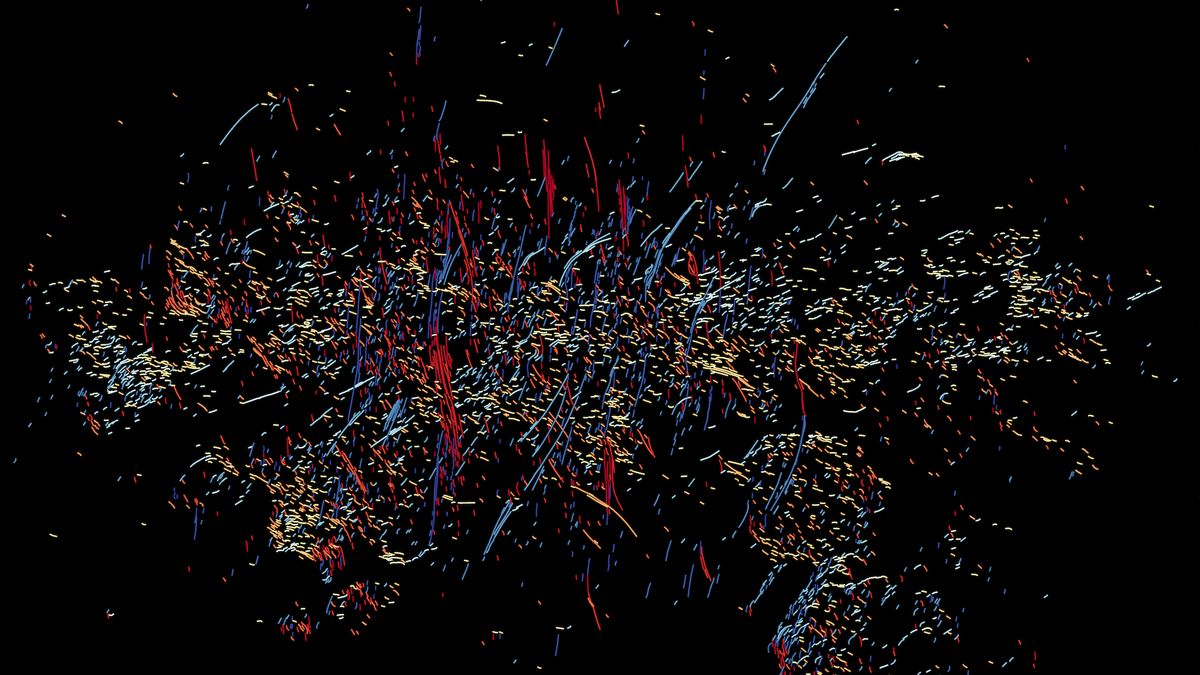Hundreds of One-Sided Strands Found in Our Galaxy's Core
Behold, the stringy, rainbowesque melange of one-dimensional structures hidden in plain sight across the galactic center. Or should we say plane sight? The tendrils measure 5 to 150 light-years in length , and now a team of scientists has found filaments that stretch out parallel to the galactic plane surrounding the supermassive black hole at the galaxy’s center, like fingers on a splayed hand.
These one-dimensional structures were first discovered in the 1980s by Farhad Yusef-Zadeh, an astrophysicist at Northwestern University. Since then, the known filaments have increased in number; just last year, a team led by Yusef-Zadeh announced the discovery of a thousand more strands, increasing the number of total known filaments tenfold.
Advertisement
The team’s latest discovery changes the known direction of the filaments; previously, known strands were generally perpendicular to the galactic plane, stretched across it like hash marks. The newly discovered filaments are parallel to it and much shorter than the previously known structures.
“I’m used to them being vertical,” Yusef-Zadeh, the new paper’s lead author, said in a Northwestern release. “I never considered there might be others along the plane.” The team’s research was published today in The Astrophysical Journal Letters.
Advertisement Advertisement
The horizontal filaments are only on one side of Sagittarius A*, the supermassive black hole at the center of our galaxy. Sag A* (for short) lies about 26,000 light-years away and is about 4 million times the mass of the Sun.
That may seem uncomfortably close—indeed, it’s close enough to “see” in radio telescope imagery—but black holes are peppered throughout our galaxy; one dormant hole is a mere 1,600 light-years away. But no black hole in the Milky Way generates as much cosmic hoopla as Sag A*, as the new, stubbier filaments neatly showcase.
Advertisement
“It was a surprise to suddenly find a new population of structures that seem to be pointing in the direction of the black hole,” Yusef-Zadeh said. “We found that these filaments are not random but appear to be tied to the outflow of our black hole. By studying them, we could learn more about the black hole’s spin and accretion disk orientation.”
Advertisement
Yusef-Zadeh has continued to study the filaments since using radio telescopes, including the MeerKAT telescope in South Africa. The filaments are one-dimensional—basically, extraordinarily long strands of electrons interacting with a magnetic field. The newly discovered strands are about 6 million years old, by the team’s estimation.
The particles composing the longer filaments are traveling at nearly the speed of light, and the horizontal ones appear to accelerate thermal material in a molecular cloud, according to the same release. As such, the stubbier horizontal strands seem to emit thermal radiation.
Advertisement
“We think they must have originated with some kind of outflow from an activity that happened a few million years ago,” Yusef-Zadeh said. “It seems to be the result of an interaction of that outflowing material with objects near it.”
Black holes have suffered for their name. They are sometimes presumed to be vacant, inert regions—or at least black box regions where our astrophysical understandings break down. But for all their mysteries—from how they form to how they grow—black holes are incredibly dynamic drivers of cosmic shakedowns and interactions.
Advertisement
The filaments in and around the Milky Way center are just one of the curiosities that needs more investigation, but clearly are connected to the black hole holding everything together.
More: Grasp the Size of a Black Hole in This New NASA Animation
Source: Gizmodo


